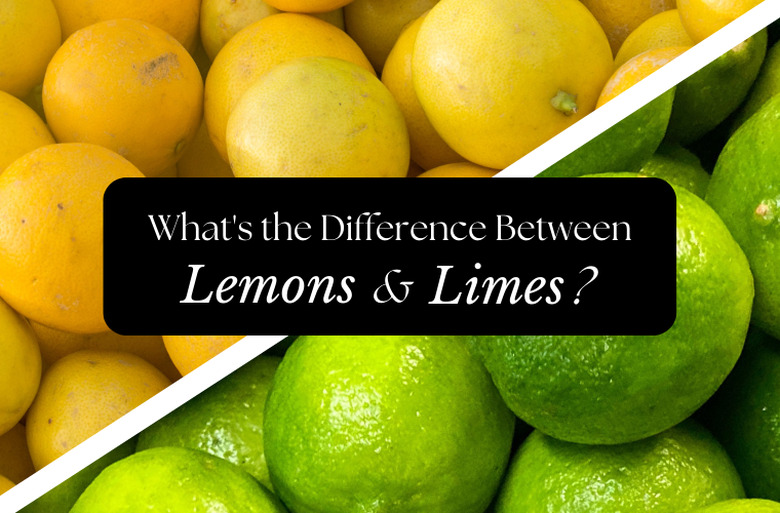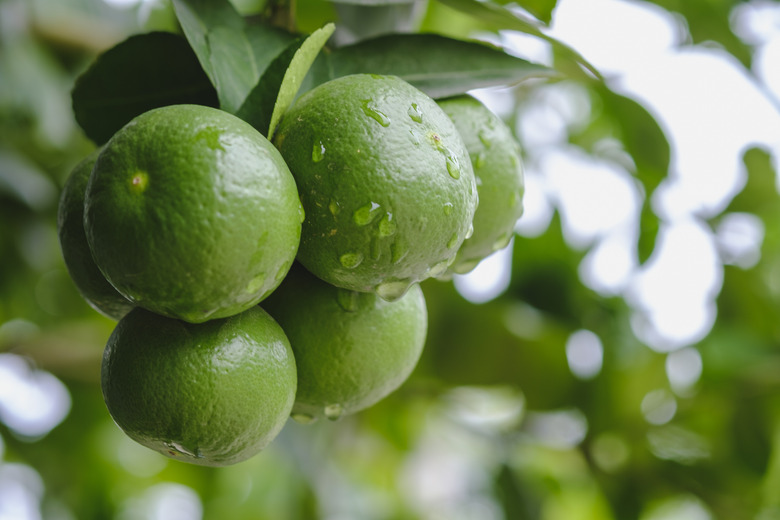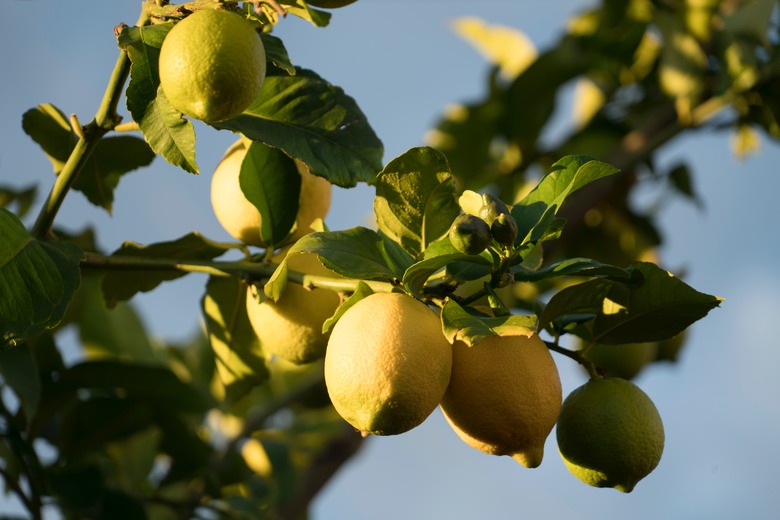How Do You Tell The Difference Between A Lemon And A Lime Tree?
Are Limes and Lemons the Same?
While limes might look like small, unripe lemons, they're quite specifically different fruits. However, the trees look similar, so how can you tell the difference between a lime (Citrus aurantiifolia) and a lemon tree (Citrus limon) if it has no fruit?
The flowers and subsequent fruit visibly differ, of course. But if your tree has not yet flowered and set fruit, look at the leaves, the tree's shape and its size.
Flowers and Fruit
The famous sweet scent given off by citrus (USDA hardiness zones 8 to 11) is common to both lemons and limes, although some say that lemon has a stronger scent.
Flowers: Small and White in Clusters vs. Purple and Potentially Single
The flowers of the lime are small and white, borne in clusters. The lemon, on the other hand, has flowers with a soft purplish tinge and may be single, or they may also grow in a cluster, like the lime. So the main difference here is the color.
Fruits: Rougher and Bumpy Elongated Footballs vs. Thinner and Smoother Spheres
The fruit is clearly different, so if your tree has fruited, you know which one you have. However, if it's early in the season and your tree is full of small, green fruits that have not yet taken on their mature color and size, the color will not help you identify your tree, so consider the shape.
Lemons usually have an elongated football shape with points at each end. Its skin may be rougher or bumpy. Limes are typically more rounded, with thinner, smoother skin. If you cut into the fruit, the thicker skin on the lemon will be more visible.
Size and Shape
At their mature height, lemon trees are bigger than limes. If the tree you're looking at is nearly 20 feet tall and has a spread just as wide, you know it's a lemon.
Lime trees are smaller with less of a spread, although they tend to grow like bushes with multiple trunks, unless pruned otherwise. They usually reach no more than 13 feet in height.
Leaf Differences
While the leaves look quite similar and both are an oblong shape, you'll notice that a lemon tree's leaves are larger, about 5 inches long, while lime tree leaves are about 2 inches long. But the real delineator is that lemon leaves have fine teeth on the edges, while lime tree leaves are smooth.
Nutritional Characteristics of Limes and Lemons
While limes and lemons are traditionally used differently in the culinary world, they have a very similar nutritional profile. They both pack a huge antioxidant and vitamin C punch as well as being rich in flavonoids.
Together, they are the most acidic of all citrus fruits, with lemon juice offering just slightly more citric acid content at 48 grams per liter compared to lime's 45.8 grams—hardly a blip when it comes to these two acidic fruits. Lemons contain a little more potassium and vitamin C than limes do, but the differences are negligible.


